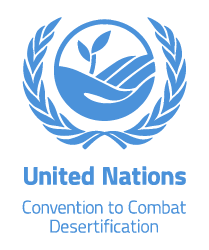Location
The United Nations Convention to Combat Desertification in Those Countries Experiencing Serious Drought and/or Desertification, Particularly in Africa (UNCCD) is a Convention to combat desertification and mitigate the effects of drought through national action programs that incorporate long-term strategies supported by international cooperation and partnership arrangements.
Members:
Resources
Displaying 156 - 160 of 585Land Degradation Neutrality in Small Island Developing States
Land degradation exacerbates the unique vulnerabilities of Small Island Developing States (SIDS) to environmental challenges, such as climate change, flash floods, soil erosion, lagoon siltation, coastal erosion and sea level rise, undermining their economic potential. Land Degradation Neutrality (LDN) contributes to achieving the Sustainable Development Goals (SDGs) in SIDS, preserving biodiversity and increasing resilience to climate change. Land degradation has a strong negative impact on climate-sensitive sectors like agriculture, water resources management and coastal zone management.
Land Degradation Neutrality for Biodiversity Conservation
Land degradation and biodiversity loss are among the most pressing environmental challenges facing humanity. Land degradation has reduced the productivity of nearly one-quarter of the global land surface, impacted the wellbeing of about 3.2 billion people and cost about 10% of annual global gross domestic product in lost ecosystem services. An estimated 23% of total anthropogenic greenhouse gas emissions derive from agriculture, forestry and other land uses, contributing to climate change.
Realising the Carbon Benefits of Sustainable Land Management Practices. Guidelines for estimation of soil organic carbon in the context of land degradation neutrality planning and monitoring. A report of the Science-Policy Interface
The UNCCD-SPI technical report “Realising the Carbon Benefits of Sustainable Land Management Practices: Guidelines for Estimation of Soil Organic Carbon in the Context of Land Degradation” provides decision guidance for the estimation of soil organic carbon (SOC) in support of appropriate deployment of sustainable land management (SLM) technologies, in order to maintain or increase carbon in the soil and contribute to the achievement of land degradation neutrality (LDN).
Land Restoration for Achieving the Sustainable Development Goals: An International Resource Panel Think Piece.
Land restoration has tremendous potential to help the world limit climate change and achieve its aims for sustainable development. In its latest study, the International Resource Panel finds positive spin-offs to support all 17 Sustainable Development Goals agreed to by the world’s nations as part of the 2030 Agenda for Sustainable Development. While other reports have focused on a subset of the SDGs, this report has intentionally considered all of them, and has done so by inviting a large number of diverse authors to participate in the process.
Voices from the Land: Restoring Soils and Enriching Lives
When the UN Convention to Combat Desertification was created at the Rio Earth Summit over 25 years ago, it became the only international convention dedicated to protecting, managing and restoring our land. The environmental benefits of that work are already well documented, particularly when it comes to the inextricablelinks with climate change and biodiversity. But this book goes much further by highlighting the impact on the wellbeing of over three billion people – nearly half the world’s population – who are directly affected by land degradation.


